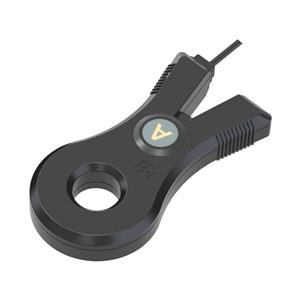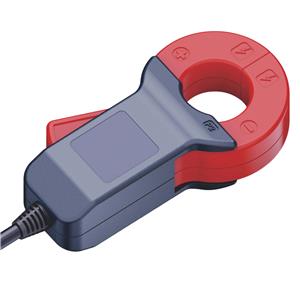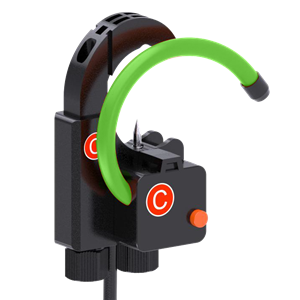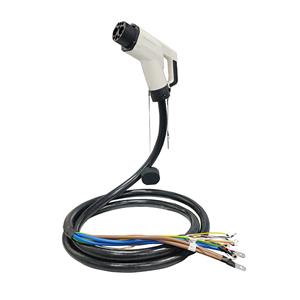-
1705-2025
AT32F403 Series MCUs Redefine Energy Metering Precision
The AT32F403ARCT7 and AT32F403AVG7T metering chips now power over 2 million advanced electricity meters globally. These 32-bit ARM Cortex-M4F-based controllers achieve 0.2% active energy measurement accuracy through integrated 24-bit Σ-Δ ADCs and hardware computation engines.
-
3103-2025
Next-Gen Latching Relays with Energy-Efficient Magnetic Cores
The latest advancements in latching relay technology focus on enhancing energy efficiency and durability through innovative magnetic core materials. Traditional relays rely on ferrite or alnico cores, but modern designs now integrate advanced composite materials like nanocrystalline alloys or amorphous metals.
-
2903-2025
Renewable Energy Systems Embrace Component-Based Fluxgate Innovations
The global shift toward renewable energy has sparked innovation in component-based fluxgate sensors, which are now pivotal for monitoring power grids and energy storage systems. These sensors offer modular scalability, allowing engineers to adapt their configurations for wind turbine control, solar farm inverters, and grid stability analysis. Their ability to measure DC and AC magnetic fields with ±0.1% accuracy makes them ideal for detecting imbalances in hybrid energy systems.
-
2703-2025
Miniature CTs Revolutionize Renewable Energy Monitoring
The global push for renewable energy has driven demand for compact, reliable current measurement solutions. 10A miniature current transformers (CTs) are now integral to solar inverters and wind turbine systems, where precise current monitoring ensures optimal power conversion and grid stability.
-
2011-2024
The Ubiquitous Power of Fixed-Value Current Dividers
In today's world, where technology is seamlessly integrated into every aspect of our lives, the humble Fixed-Value Current Divider (FVCD) plays a crucial yet often overlooked role. These versatile components can be found lurking behind the scenes in a multitude of applications across industries, quietly ensuring accurate current measurement and efficient power management.
-
0511-2024
Static Energy Meter: A Revolution in Power Consumption Monitoring
The emergence of the Static Energy Meter (SEM) represents a significant leap in the realm of power measurement technology. This innovative device redefines the way we track and manage electrical consumption, particularly in industries where efficiency is paramount.
-
1106-2024
Maximizing Renewable Energy with Energy Metering ICs in Solar Power Systems
Renewable energy applications, particularly solar power systems, are rapidly gaining popularity as sustainable alternatives to traditional energy sources. Energy Metering Integrated Circuits (ICs) play a crucial role in these settings, enabling efficient energy harvesting and monitoring system performance. This article explores the significance of Energy Metering ICs in renewable energy applications, highlighting their ability to enhance energy generation and optimize overall system efficiency.
-
1006-2024
Energy Metering ICs: Revolutionizing the Industry with Design Innovations
The world of energy metering is witnessing a technological revolution driven by innovative Integrated Circuit (IC) designs. These advancements are set to transform the industry, bringing about increased efficiency, enhanced accuracy, and improved functionality. At the forefront of this progress are energy metering ICs, which boast cutting-edge features that push the boundaries of meter performance.
-
0906-2024
Calibrating Energy Metering ICs: Ensuring Accuracy and Reliability in Energy Measurements
The journey to achieving accurate energy measurements revolves around the meticulous process of calibrating Energy Metering ICs. These ICs play a critical role in smart grid infrastructures, and their precision is paramount for reliable energy data. The calibration process is a delicate dance, requiring expertise and specialized equipment to ensure compliance with stringent accuracy standards.
-
0706-2024
Empowering Smart Grids: Unveiling the Vital Role of Energy Metering ICs in Real-Time Data Transmission and Two-Way Communication
In the era of rapid technological advancements, smart grids have emerged as a transformative solution for efficient energy management. At the heart of these intelligent grid systems lies an unsung hero—the Energy Metering ICs (Integrated Circuits). While often overlooked, these tiny marvels play a crucial role in enabling seamless two-way communication and real-time data transmission within smart grid infrastructures. This article unravels the significance of Energy Metering ICs, shedding light on their pivotal role in revolutionizing the way we consume and manage energy.




